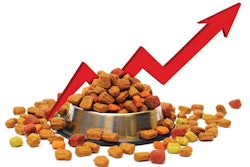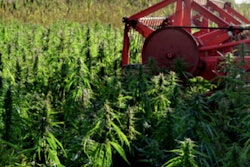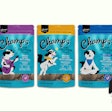
While prevailing global pet food trends are not new, the COVID-19 pandemic heightened their importance and continuing influence for at least the next two years, according to Kate Vlietstra, associate director for Mintel Food and Drink. She delivered the opening session of Petfood Forum Europe 2022, held May 23 in Nuremberg, Germany, in partnership with Interzoo 2022.
Specifically, Vlietstra encouraged pet food professionals in the audience to leverage pet owners’ evolving priorities for their pets’ health, make sustainability efforts tangible and transparent, and continue to capitalize on the merging of humanization and premiumization.
Focus on pet health
In the U.S., 30% of pet supply buyers have reported paying more attention to their pets’ health since the beginning of the pandemic, according to Mintel/Kantar data shared by Vlietstra, and 88% agree it’s important to take preventive measures to protect a pet’s health. That may include providing supplements: 28% of U.S. pet owners do, while 35% of U.K. owners believe supplements are the most efficient way to deliver functional benefits to pets.
Examples of benefits pet food products can provide include support for anxious pets—30% of U.S. pet food and treat buyers are interested in products that can calm anxiety, Vlietstra reported—as well as functional pet drinks and products aiding digestive well-being.
In the future, five years and beyond, Vlietstra believes pet food brands must let science and data lead the way in helping pet owners make informed decisions about their pets’ health.
Environmental transparency: Meat ingredients, insect protein
Consumers, including pet owners, are demanding sustainability and environmental transparency from the brands they purchase, but pet food has some catching up to do, at least compared to human food, Vlietstra said. Mintel data shows that, as of end of 2021, 19% of global human food product launches carried an environmentally friendly packaging claim, versus only 14% for pet food. For recycling, it was 15% and 12%, respectively; for sustainable habitat or resources, 12% and 7%; and for environmentally friendly product, 10% and 8%. However, pet food claims about animal welfare did reach 6% in 2021, while human welfare claims on human food products have remained stagnant at 4% since 2019.
Vlietstra targeted meat-based pet food ingredients as another area for improvement in terms of transparency. She cited a 2021 National American Renderers Association (NARA) study proposing that the term “by-products” in pet food ingredients be replaced by “co-products,” possibly boosting consumer acceptance and understanding that using all parts of an animal is more sustainable. Currently for U.S. pet owners, there is a disconnect: Mintel data indicates many consider 50% of an animal to be inedible; however, 51% of pet owners surveyed say organ meat and cartilage can be good sources of nutrients for pets.
While the NARA study concluded that meat production will continue for the foreseeable future, that doesn’t negate alternative protein sources for pet food—and insect protein is decidedly on the rise and gaining traction with consumers. Acknowledging that the ingredient accounts for less than 1% of global pet food product launches, Vlietstra also provided data showing that 36% of U.K. pet food buyers said they would be interested in foods with insect protein, up from 21% in only three years. In South Korea, the pet food with the third to fourth highest sales is Foody Worm, an insect-based brand.
Vlietstra commented that lab-grown meat is “edging closer” to becoming a reality for pet food (and human food).
Pet food premiumization outpacing human food
Premiumization has been a force in pet food for some time now, and the pandemic only accelerated it, according to Vlietstra. From 2016 to 2021, the average cost of global pet food products launched (per 100 ml/g) soared 32%, more than most human food categories, she said.
That many pet owners are willing to pay more for pet food may be at least partially because they are forgoing having children and focusing on their pets instead. In the U.S., for example, 23% of non-parents aged 18-49 say they are very unlikely to have children; in China, 32% of pet owners view their pets as their children; and in the U.K., 56% of pet owners said they would rather cut back on the money they spend on themselves rather than what they spend on their pets.

















